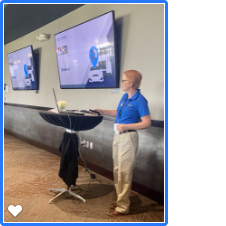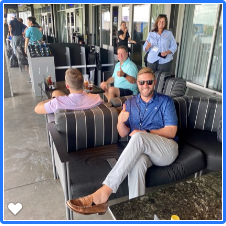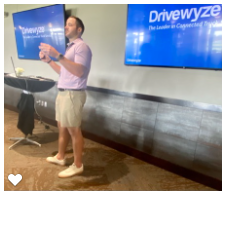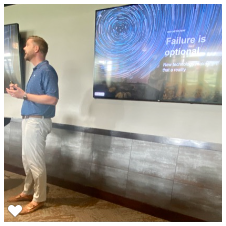Learn how the truck supply chain is right now, why it could be even worse in 2022, what you can do to prepare for this period of growth, and more!
Owner-operators and fleet owners, if you don’t have your truck or trailer orders in it’s going to be a while before you can hop in a new Tractor….
The trucking industry with a combination of unprecedented freight demands supply chain shortages on key parts, especially computer chips. Did you know that Class 8 vehicles need between 15 & 35 such chips, depending on the technology involved, There’s an additional 20 to 40 other critical parts that remain in tight supply. The industry has not experienced this type of backlog since WWll! According to FTR Chairman and CEO Erik Starks in an article by Heavy Duty Trucking magazine.
He stated “Given rising domestic freight demand, FTR’s equipment outlook sees pent-up truck demand continuing into 2022 For Class 8, FTR’s 2021 production outlook remains at 298,000 units, with 2022 increasing from the previous projection of 319,600 to 325,000. — and possibly into 2023. Indeed, the firm projects 360,000 Class 8 factory shipments in 2023.
Used tractors have high resell value
What OEMs are saying
What OEM leaders are saying
“We are managing this global supply chain issue the best we can,” says Diane Hames, Navistar’s vice president of marketing. “It’s a dynamic situation, and Navistar is taking extreme measures to manage the situation and remains focused on maximizing production so we can deliver more units to our customers.”
David Galbraith, Mack Trucks’ vice president of global brand and marketing, says the OEM’s Lehigh Valley Operations is “working hard to meet customer requirements in the face of significant supply chain constraints affecting automotive and truck manufacturers globally. We’re continuing to do everything we can to minimize the impact on our customers and maintain the flexibility to adjust production as needed.”
Jacob White, Peterbilt’s director of product marketing, says the OEM, “like most everyone in almost every industry, is navigating through the shortages as best as possible. Our team has put together a good plan and we continue to deliver Peterbilt trucks to our customers as quickly as possible.”
According to the article dated December 17th by David Cullen in Heavy Duty Trucking magazine
Connected Vehicles
Connected Vehicles & Telematics
Connected vehicles are making it easier for fleets to manage their trucks’ health and efficiency, with remote diagnostics, over-the-air programming, and more. The first OEM to offer this was Volvo back in 2012
Navistar’s Hames notes that “all International LT Series come equipped with OnCommand Connection telematics and a free two-year subscription to our Advanced Remote Diagnostics solution. OnCommand Connection keeps vehicles moving through powerful features such as interactive mapping, engineer-designed action plans, and access to fleet health information through the International portal or customized reporting to a preferred email inbox.”
Contact Add On Systems to learn more about connected vehicles click to schedule
Driver Environment
Last but most certainly not least — and arguably the most pressing issue trucking faces — the driver shortage calls for doing everything possible to improve the driver’s environment and the experience behind the wheel. And truck makers have focused on that task.
While Navistar’s International LT Series isn’t new this year, it’s a good example of this advancing trend. “Every detail inside the International LT Series cab has been carefully designed, measured and clinic-tested to optimally benefit the driver,” Hames says. These include “more intuitive controls, enhanced visibility, a quieter cab, critical information at the driver’s fingertips, and dozens of other smart features that help keep a driver comfortable and in control over the long haul.”
There has been a focus on that in the new trucks unveiled in the past year. Jim Walenczak, Kenworth’s assistant general manager for sales and marketing, says of the T680 NextGen, “We built this truck around them and for them. [It] provides drivers with the convenient SmartWheel, new customizable 15-inch Digital Display, excellent forward lighting down the road, additional advanced driver assistance systems, and, of course, a premium and extremely comfortable cab and sleeper.”
At sister Paccar company Peterbilt, White says, “the driver is at the center of every Peterbilt truck, and that is what leads to the design philosophy of the new Model 579. Peterbilt engineers and designers set out to deliver the most comfortable, spacious, and quiet cab possible. A great example is the class-leading storage volume and bunk size in the UltraLoft sleeper.”
“The low order numbers in November in no way are representative of total demand,” said Don Ake, FTR vice president of commercial vehicles. “The weak volumes are because OEMs are managing their backlogs very carefully.“
In addition to inflated equipment prices, spot rates for freight are at record levels and contract rates are rising. When the manufacturing sector of the economy gets past the supply chain crisis, freight volumes will increase, Ake said.
Payback for overbooking
ACT’s October data, the last full month available, showed a Class 8 backlog of about 281,000 units. Based on the build rate during the month, the backlog-to-build ratio was 14.6 months because of supply challenges, Vieth said.
Component deliveries, especially semiconductors, have been unreliable since March, Ake said. OEMs booked a huge number of orders a year ago, expecting to be able to build at full capacity throughout 2021, which has proved unachievable.
“After overbooking almost every month in 2021, the OEMs are being extremely meticulous about scheduling commitments in 2022,” Ake said. “Once the OEMs are confident they can obtain the necessary production inputs, they will boost production and enter more orders.”
Class 8 Orders Crash Due to Supply Chain Delays
New monthly truck orders dropped to their lowest in 26 years, despite demand remaining high, according to FTR Associates.
Preliminary North American Class 8 orders totaled 9,500 units, down 41% from October levels and down 82% year over year – the lowest total since 1995.
However, the drop has nothing to do with demand, which is still strong, but due to OEMs limiting order intake in response to worldwide supply chain disruptions.
“The low order numbers in November in no way are representative of total demand. The weak volumes are because OEMs are managing their backlogs very carefully. After overbooking almost every month in 2021, the OEMs are being extremely meticulous about scheduling commitments in 2022,” said Don Ake, FTR’s vice-president – commercial vehicles.
Conclusion
One of the keys to success in 2022 is asset utilization and driver retention. You may be wondering how you can keep your equipment longer, but that might not even be possible! New and used equipment will cost more than ever before as well; we recommend contacting our team now for a consultation on optimizing the driver experience with Add On Systems.



















